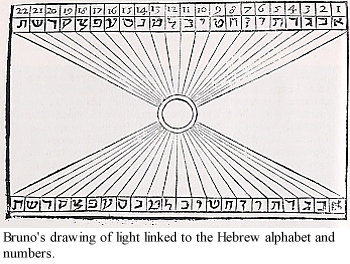End of Europe's Middle Ages
Hermeticism was the notion of God as a magician that developed as a result of the translation of texts in the late 1400's by Ficino in Florence. These texts were believed to contain the wisdom of the Egyptians during the time of Moses and supposedly were written by an ancient Egyptian, Hermes Trismegistus (three-times master), who was considered to have received divine knowledge of the physical world just as Moses received divine knowledge about the moral world. When these texts, the Hermetic Writings, became available to Western scholars after the fall of Constantinople, they provided the Church with a source of scientific information that could be traced back to the time of the original Mosaic revelations. The Writings claimed that God had written the secrets of the cosmos in a mathematical language. The cosmology of the Hermetic Writings was full of magical powers, the secrets available only to the few who were able to look beyond surface phenomena by studying the occult. Hermeticism was mystical, magical and mysterious.
There were three major components to hermeticism that were especially important to scholars in the late Middle Ages and Renaissance: alchemy, numerology and the magic of letters (cryptography and ciphers).
Alchemy was the art, or science, of corporeal substance, combination and
mixture. It sought to transmute base metals, such as lead, to precious
metals, such as gold, by reducing a base metal to prime matter and
reconstructing it into gold. A second aspect of alchemy was the quest for the
recipe for the magical elixir, or "Philosopher's Stone", that was believed to
be able to permeate base metals and in this way transform them into gold.
To facilitate their efforts, alchemists developed many of the procedures and
apparatus that is now used in modern chemical laboratories.
Letters, especially the letters of the Hebrew alphabet, were believed to have magical powers when arranged in certain combinations. The Cabbala was the mystical interpretation of the Hebraic Old Testament. Breaking the code of the Bible would, according to tradition, reveal all the secrets of the universe. Many hermeticists applied themselves to this goal and attempted to reinterpret the Bible using ciphers.

The study of numbers and ratios were yet another aspect of hermetic study. Just as letters and combinations of letters were seen to have mystical powers, so too did numbers. The study of numbers made an impact upon many other areas of scientific study, such as astronomy and mathematics, as well as areas that would not be considered scientific by modern definitions, such as astrology and numerology.
In the late Middle Ages, reaction against the rational soulessness of
Aristotle and the resurgence of neo-Platonism provided an encouraging
environment to the mystical spirituality of hermeticism causing the philosophy
to attract many followers. In the sixteenth century, Isaac Casaubon
discovered that the Hermetic Writings were far from ancient, having actually
been written in the second century, and were part of the early Neoplatonic
movement. Despite this proof of the fraudulent nature of the texts,
hermeticism continued to be very popular and influenced many of the great
scientific minds of the Renaissance and early modern periods, among them
Copernicus, Robert Boyle and Sir Isaac Newton.

|
Return to Intellectual Thought |
The End of Europe's Middle Ages / Applied History Research Group / University of Calgary
Copyright © 1997, The Applied History Research Group